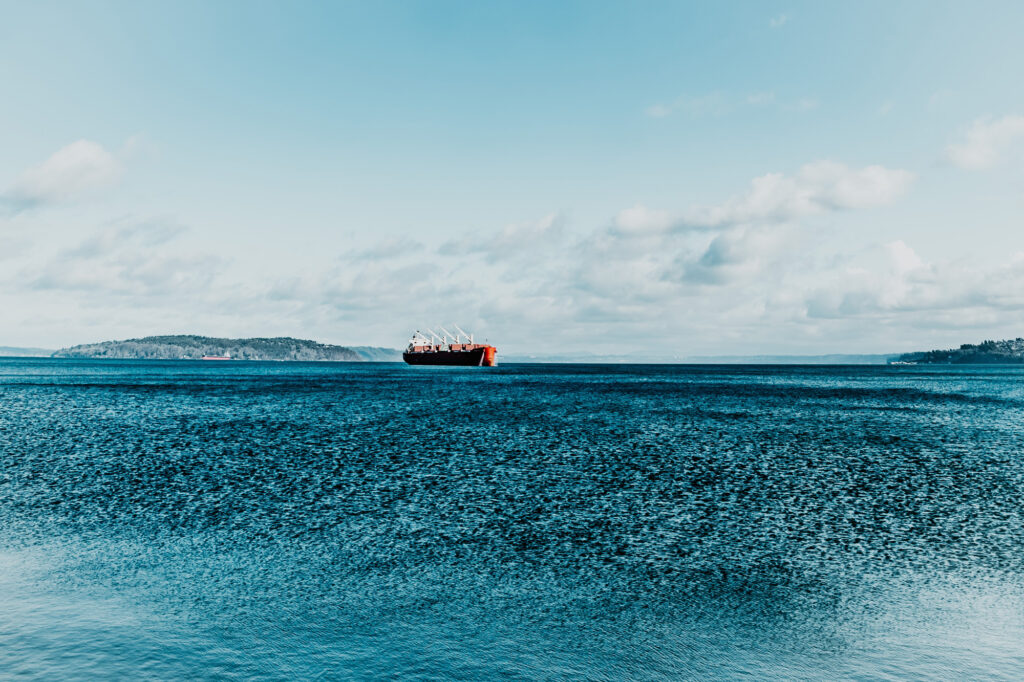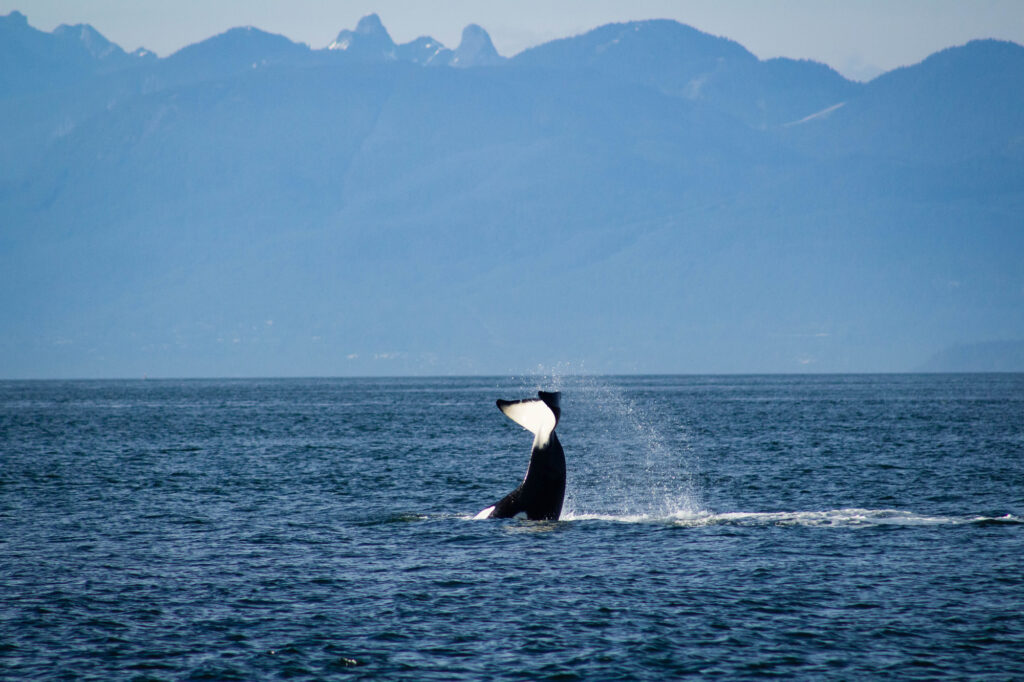
[ investing in the future ]
Tacoma Schools, Port Explore Joint Plan to Build ‘Maritime 253’ Skills Center
In a move to promote maritime industry jobs as potential career paths for students in Pierce County, the Port of Tacoma and Tacoma Public Schools have formed a partnership to consider building a new maritime skills center on Port-owned land, to be called Maritime 253 (the Tacoma area code is 253).
The decision to form an interlocal agreement to develop the center came about in March, following a year-long effort by the Port and Tacoma Public Schools to attract more youth to an industry that has had trouble finding skilled workers to replace its aging workforce.
Once established, Maritime 253 will be a regional career and technical education (CTE) center, serving high school students from multiple Pierce County school districts. Students taking part will enroll in advanced CTE courses at both the skills center and in additional courses at their high schools. Courses and participation will be offered at no cost to students.
“We realized there was a natural synergy between our plan and locating the new skills center at the port would be a great fit,” said Eric Johnson, executive director of the Port of Tacoma. “Working to prepare future generations to fill jobs in the Port, maritime, and skilled trades industries is a key priority.”
A similar marine-themed educational program began on a smaller scale in South Seattle in 2021, when the Highline School District launched the Maritime High School program that NWY covered in our March 2022 issue (find it online at nwyachting.com). In the planned Tacoma project, education will be provided not in a particular high school, but in a skills center that will be open to all interested students across Pierce County’s school districts.
Details of the Maritime 253 curriculum are still being developed by maritime industry advisors, but the instruction will focus on four main pathways: skilled and technical trades; transportation and logistics; technology and innovation; and sustainability. The center will also establish programs in which students can earn professional credentials, certificates, and apprenticeships. Through these opportunities, participants can develop skills for managing goods in a global economy, including warehouse logistics, equipment operators, dock workers, and other ship-related jobs.
The next steps for the Port and the school districts will be to move to phase one of the project, which will be to begin the design-build process, involving site-condition assessments for suitable properties, issuing proposal requests for a designer and builder, and setting up a system for public involvement as the process moves forward. It’s all an effort to help support Tacoma’s marine cargo operations, which currently provides 42,000 jobs and $3 billion in labor income, according to the Port. For more details on future developments, go to: tacomaschools.org/departments/cte/maritime-skill-center

[ protecting our Southern Residents ]
WA Instructs Boaters to Give Orcas (Much) Wider Berth for Safety
We clearly love our Southern Resident orca whales that cruise the Salish Sea, but we are loving them too much. Under a new bill that passed overwhelmingly in the Washington House of Representatives in April and soon to become state law, Washingtonians will need to give the endangered animals more room to protect their safety in crowded waters.
The bill will more than triple the mandatory distance to be maintained between whales and watercraft, from 300 yards to 1,000 yards—the equivalent of about half a nautical mile and the same exclusionary distance currently mandated for commercial whale-watching vessels. The bill will also modify whale-watching business license fees, modify existing enforcement rules, eliminate certain other fees, and create new licenses for paddle-tour and paddle-guide businesses that will replace kayak-guide licenses. The House bill is very similar to SB 5371, which passed earlier in the state Senate. Both bills have strong bipartisan support and are currently in negotiations to smooth out minor differences. A joint bill will be sent to Governor Jay Inslee, who is expected to sign it into law. Once signed, the law would take effect in January 2025.
Boaters, however, are being encouraged to not wait and begin voluntarily observing the 1,000-yard buffer in the current boating season. A nonprofit coalition of conservation groups called Give Them Space (givethemspace.org) is offering a voluntary pledge that recreational and commercial boaters can sign, stating that they will immediately heed the 1,000-yard buffer for animals in the J, K, and L pods.
The latest estimates for the number of orcas in the Southern Resident population have fallen from 93 whales in the 1990s to just 73 today, making them one of the most critically endangered species in the country. Not only will the 1,000-yard exclusion zone prevent accidental boat/whale collisions, it will also help reduce underwater noise produced by shipping, which can disrupt the orcas’ ability to echo-locate for prey and mother orcas nursing their young.
“This is a momentous occasion for our state and the protection of our marine life,” said state Rep. Debra Lekanoff (D-Bow), a member of the Tlingit and Aleut Tribes, who championed the House bill. “By creating a setback distance from Southern Resident orcas, we are sending a powerful message that we are committed to protecting our marine ecosystems and respecting the cultural heritage of Native American tribes.”
Before the law is finalized, the Be Whale Wise nonprofit organization is continuing to promote its flag-based educational campaign for boaters in Washington and British Columbia to show their support for orca whale protection, offering “Whale Warning Flags” to alert other boaters when whales are spotted in a particular area. The flag, with a white field and a red, yellow, and black circular logo depicting a whale tail, is recommended to be hoisted as an indication to other boaters to slow their speed or alter their course if whales are spotted nearby. The flags come in two sizes—16- by 24-inches and 2- by 3-feet—and can be found at several marine organization websites in Washington and Canada. For more information about how to obtain these flags, and for further information on best whale safety practices, go to: bewhalewise.org
[ what’s up on the waterways ]
Summertime Cruise News: Beach Buoys Pump Out the Jam
Summer’s the busiest time of the year for Northwest boaters, so here is a roundup of some regional developments that may affect your warm-weather cruising—from new moorage buoys in British Columbia to Puget Sound’s best sewage pump-out spots.
- New D’Arcy Island, BC, Moorages Open: D’Arcy Island, one of the lesser-known islands at the southern end of Canada’s Gulf Islands archipelago, was recently equipped by Parks Canada with two new guest moorage buoys, paid for by the BC Marine Parks Forever Society. Located in the Haro Strait a few miles west of San Juan Island, 83-hectare D’Arcy Island is uninhabited but has a network of old rails, primitive campsites, and some picnic tables for day hikes. The mooring buoys on the east side of the island were set up to help boaters navigate the notoriously rocky shores and strong currents in the strait that have kept visitors away over the years. Under the new visitor rules, boaters with vessels measuring less than 50 feet may use the buoys without charge for short-term stays until 3 p.m.; those camping overnight will be charged C$14 a night from May 15 to September 30. For more information, visit the BC Marine Parks site at: bcmpfs.ca
- ‘Mind the Zone’ Seaplane Buoys Return to Lake Union: Last year’s “Mind The Zone” boat safety campaign on Seattle’s Lake Union is returning this summer, from Memorial Day to Labor Day Weekend, to raise awareness of the busy lake’s increased traffic by both boaters and seaplanes. A series of five well-marked orange-and-white buoys have been anchored in a north-south central zone of the lake that is shared by sea planes and boaters. Yellow lights on each buoy begin flashing when a plane is approaching to land or take off on the water. The lights are an indication that all swimmers and operators of power, sail, or paddle boats should move quickly to the east or west of the buoys at a minimum distance of 200 feet on either side. The effort is managed by the Recreational Boating Association of Washington, and currently voluntary. More details about the seasonal program can be found at: rbaw.org/mindthezone
- Refurbished Keystone Boat Launch to Re-open This Month: After several months of repair work, the Keystone Boat Launch on Whidbey Island is scheduled to re-open. Since late 2022, the launch and breakwater structures have been closed for repair after a damaging December 2018 storm. While the final construction of the breakwater has interfered with the spring halibut and lingcod fishing season, the boat launch is expected to be fully restored for the summer season. The launch, located near the Keystone Ferry Terminal within Fort Casey Historical State Park, will include a restored shoreline, new guide piles and floats, and a breakwater structure designed to better protect the infrastructure from future storms. For more details, go to: parks.wa.gov
- Redesigned Website Educates WA Boaters About Safe Pumpouts: With seasonal watercraft usage on the rise again this summer, Washington Sea Grant has refreshed its website to educate boaters about the latest safe and environmentally conscious method of pumping out boat sewage in the Puget Sound area. The Pumpout Washington website is a clearinghouse of information about how boat operators can comply with the state’s No Discharge Zone (NDZ) policy, which bans any sewage from being discharged into Puget Sound waters. The refreshed site contains a live map, updated in real time, showing the locations of safe permanent and mobile pump-out stations and boaters can also learn about how NDZs provide ecological protection for humans and regional aquaculture, and plan ahead for any pit stops they may need for future extended summer excursions. Find out more at: pumpoutwashington.org


